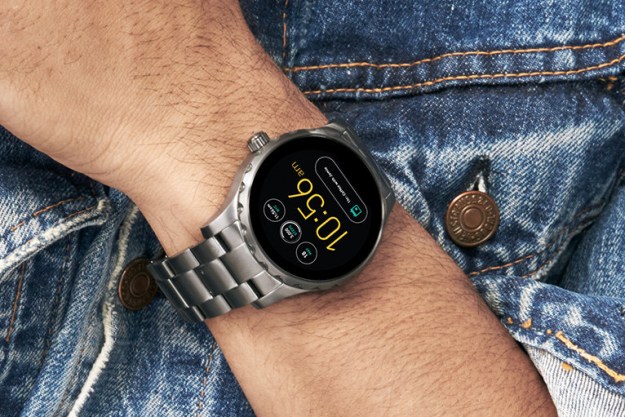Some days, no amount of coffee can compel your eyelids to stay propped open. Walk into any pharmacy and you’ll find dozens of eye creams that claim to erase dark circles, awaken your eyes with caffeine, and make it look as though you had a full night’s sleep.
Eye massagers, on the other hand, are not exactly a dime a dozen at your local CVS. They’re the domain of spas and fancy resorts, but soon, you’ll get to buy your very own eye massager, thanks to a small company called InTrust. Its water-propelled eye massager is called the Aurai, and its the most wonderful thing I’ve used at CES so far.
When I finally took the Aurai off, I opened my eyes and felt a world of difference.
Between the drying desert air, the stuffy conference center, staring at screens all day, and a lack of sleep; my eyes were dying for a respite. Luckily, I had a demo of the Aurai to freshen my eyes up for the evening. At first glance, the Aurai looks like a bizarre VR headset connected to a water bottle by a tube. The headset is white with an oval-shaped silver metallic section on the front that’s split in half with a blue LED. A simple strap secures the Aurai, so it doesn’t slide off your face during the treatment. On the inside where it touches your face, is a hypo-allergenic, flexible silicone face mask with two impressions for your eyes.
When you touch the face mask, it feels soft and gel-like. That’s where the water is pumped from the water bottle-like remote control. The remote control holds the water and has four buttons: one for a cold eye massage, one for heat, one for increasing or decreasing the vibration level, and a final one for powering it on and off. You simply select your treatment, close your eyes, slide the headset on, and prepare to relax for six minutes while the Aurai works its magic.
The headset isn’t heavy, and it’s very comfortable. I chose the cold treatment in hopes that it’d wake up my tired eyes. The Aurai started to vibrate slightly, like fingers gently massaging my eye lids, as the water pulsed in underneath the silicon, growing ever cooler. It was spectacularly relaxing. The mask was never too cold, either, thanks to a special liquid transmission technology that regulates the temperature.
When I finally took the Aurai off, I opened my eyes and felt a world of difference. Gone was the heaviness of my eye lids, the dryness of my eyes, and the puffiness underneath. I felt rejuvenated, as though I’d just come from a spa. I could easily imagine using Aurai every day after work to give my eyes a break after staring at a screen all day.
And that’s Aurai’s entire purpose. It’s creators told me that the Aurai was made specifically to help people who suffer from eye strain, blurry visi,on, tension, severe headaches, and dry eyes. According to the Vision Council’s 2015 Digital Eye Strain Report, one-third of adults spend more than nine hours per day using a digital device and nearly seven in ten millennials have symptoms of digital eye strain.
As someone who works in tech and is constantly glued to my phone, smartwatch, tablet, and computer; I could easily see the benefits of having one of these at home. Anyone who’s ever had migraines would also recognize the use cases for the Aurai immediately. Beyond the obvious eye health benefits, there’s the matter of vanity. Aurai also helps eliminate puffiness and dark circles by stimulating blood flow and circulation. As someone with fair skin, disguising dark under eye circles is often a struggle. I noticed a clear difference after using the eye massager.
And, unlike other eye massagers, the Aurai doesn’t use air, so your eyes don’t get dried out during the treatment. It’s even portable, so you can take it with you, though it will need a charge from time to time.
The eye massager will be available in February 2016 on Kickstarter, starting at $120. In the meantime, you can sign up for more details on its website here.
Highs
- Comfortable headset
- Relaxing eye massage really works
- Easy to use and carry
Lows
- Not available yet
- $120 is pricey




